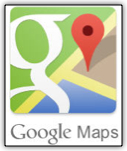Virtual Offices Defined: What You Need To Know
 Google aims to model the real world with its Maps product. However, since those doing that modeling aren't small
business owners, they have taken some serious missteps with local business listings along the way and many businesses
are still feeling the repercussions. Understanding the history may help you to make good decisions when considering the
use of virtual offices.
Google aims to model the real world with its Maps product. However, since those doing that modeling aren't small
business owners, they have taken some serious missteps with local business listings along the way and many businesses
are still feeling the repercussions. Understanding the history may help you to make good decisions when considering the
use of virtual offices.
When Googler's first conceived the idea of local business listings, they were simply looking at them as another layer to add to the Google Map. This new layer allowed searchers to find out where the businesses that they might wish to patronize were physically located and to get directions to them. Businesses that don't see customers at their physical locations, known in local lingo as Service Area Businesses or SABs, were not taken into consideration. Google did not feel that SABs should be displayed because prospects don't have a need to travel to the shops, offices, factories or warehouses of those businesses and Maps was meant to be useful to searchers, not to promote businesses.
Historically a little over 50% of US businesses are home-based. (This doesn't necessarily mean that the owner or her/his employees work at home - just that the business is based out of the owner's home.) In the construction industry, for example, about 70% of businesses are operated out of a home office. It's also typical for carpet cleaners, interior decorators, pet sitters, cleaning services and many other types of SABs to work from their residences. Even those companies that have a shop or warehouse may not actually see customers there. An example of this would be a landscaper with a staging yard where he/she stores excavating equipment and planting materials or a caterer working out of their commercial kitchen.
In ignoring these Service Area Businesses, Google left a very large proportion of small businesses off of the map. These companies were prompted to use a PO Box address as a workaround. At one point anti-spam regulator, Matt Cutts, openly suggested tha...
